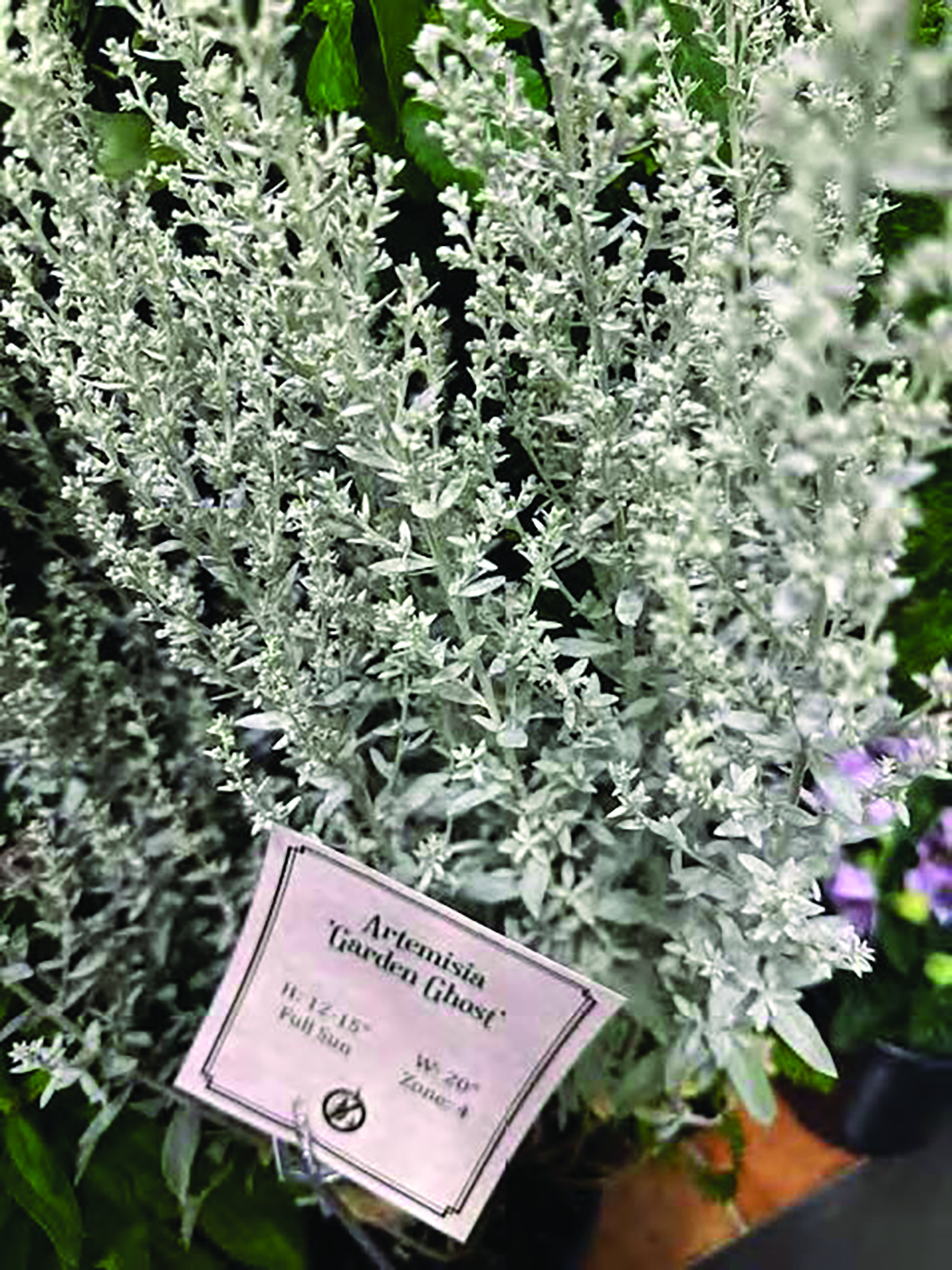The annual FarWest conference in Portland has wrapped up. Thousands of attendees and 300 vendors came to the Western region’s main green industry conference from across the country. In addition to lectures and exhibitions, plants and products vie for awards for best new introductions – and this year, according to Digger Magazine (diggermagazine.com), quite a few were raised or at least introduced in Washington. Besides supporting local growers and innovators, you can rest assured these plants should perform well in Washington, given their favored conditions, of course. Many other winners hailed from Oregon. You can see the full list of winners here: https://diggermagazine.com/fws-nvs-peoples-2024/.
(Remember, the “Right plant, right place” guideline comes first when eyeing shiny new plants for the garden!)
Artemisia ‘Garden Ghost’ from Walla Walla Nursery delivers a shock of silver the lights up sunny garden beds day or night. Once established in well-drained soil, this drought-tolerant shrub offers contrast in texture and color and will prefer to dry out between waterings. The foliage is the star with artemesias; small yellow flowers if they appear, tend to be “insignificant.” It grows from 1-2’ high and up to 2.5’ wide making a potential beefy groundcover for a parking strip or other challenging hot spot.
 Garden Ghost artemesia. Courtesy Garden Media Group Courtesy of Digger Magazine
Garden Ghost artemesia. Courtesy Garden Media Group Courtesy of Digger Magazine Can you have too many hakonechloas? Not with new cultivars like this. Hakonechloa ‘Lime Zest’ (Hakonechloa macra ‘Hakbri2’) comes from Briggs Nursery in Elma. It’s billed as the brightest available, with lime and white variegation on chartreuse leaves, with – did I mention? – pink stems! Side note: this has already found a partially shaded space in my yard paired with a dark leaved hardy hibiscus.
Like other hakone grass, this one is deciduous, reaching 1’ high and 2’ wide. They look wonderful solo in containers or massed in undulating waves.
Forsythia x intermedia ‘Discovery’ is part of the HILLIER Collection from Hillier Nurseries in the United Kingdom but is introduced by Meridian Young Nurseries in Lynden. It stands out with cream-white, widely striped foliage and a compact habit. Traditional forsythia have a blowsy, arching habit. They look wonderful in a row from a distance along a fence or draping along a wall. However, in smaller gardens, people prune them into odd tetrahedrons to fit, which doesn’t end well. Design-wise, although they offer precious early color, they offer little in the way of foliage interest the rest of the year. This one, being slightly more compact at 5’ x 5’ and variegated, may remedy both of those issues.
Note to breeders: next, can you make me a really dwarf shrubby dogwood with nice variegation, please? I love Cornus alba “Ivory Halo,” which runs 6’ tall and wide. I’d need a shrink ray to fit it in my garden. I’m thinking two or three feet tall would be perfect.
Briggs Nursery also won for a dwarf, early fruiting mulberry ‘Mojo Berry’ Mulberry (Morus rotundiloba Mojo Berry. The average size is 7’ tall by 3’ wide. PPAF). It requires no chilling hours to set fruit, so it works well in warmer hardiness zones like Seattle’s. While most mulberries fruit for three weeks, Mojo Berry bears fruit intermittently from May – September.
For the houseplant parents, Cascade Tropicals in Snohomish took home a prize for Philodendron ‘Caramel Marble,’ noted for distinctive serrated leaves with bold irregular gold variegation that emerge red. Like ‘Thai Constellation’ and ‘Pink Princess’ before it, these prized hot new philodendrons command crazy prices when they first hit the market. You may want to wait a couple of years on this one, as internet prices per plant are over $200.
 Erica Browne Grivas
Erica Browne Grivas